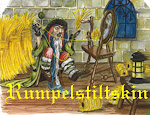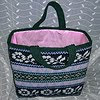When I know something is going to take all day, I need some kind of spur to actually get on with it! In this case it was the fact that natural dyeing with plantstuff is this month's assignment for Herbology in the Harry Potter Knitting and Crochet House Cup. So I asked Dave to harvest the leaves from two of the Japanese Indigo plants while I set up the kitchen for the task ahead so that I could get the leaves into hot water as soon as he brought them in.
My sister was here and took lots of photos of the process for me to share. I followed instructions in Rita Buchanan's fantastic little dyeing book 'A Dyer's Garden':
1) I covered the leaves with hot water in Kilner jars and put them in a big pan of water, then slowly heated them up to 160 degress F over two hours.

2) I strained the liquid off, and squeezed as much as I could from the leaves:
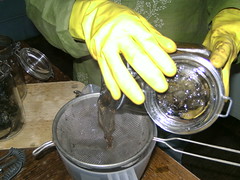

3) I added some soda ash to make the solution alkaline:
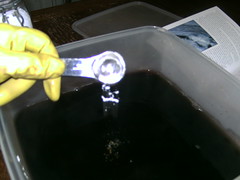
4) The mixture had to be poured back and forth between containers to aerate it - this apparently releases the pigment, and it did turn a more blue colour as I did this:
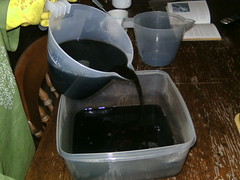
5) I added some Spectralite (a 'reducing agent'), then heated the dyebath to 120 degrees F for an hour before putting the first skein in. The dyebath had now turned a greenish yellow colour:

6) I left each skein (I did three consecutively) in the hot bath for 30 minutes. I was thoroughly excited by how the skeins changed from yellow to blue when I took them out, it took seconds rather than minutes, and they went through a marvellous turquoise moment on the way:

The same skein seconds later (though it was less bright than the picture shows):

After hanging the skeins to air for at least half an hour I washed them, then re-skeined them (they had felted a little in the process). This is how they ended up - beautiful soft tones of French blue, grey and silver. The top skein shows the bare yarn I started with - a laceweight lambswool from Texere:
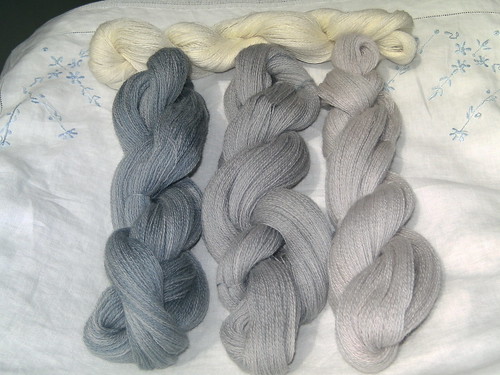
An awesome experience!!
Dave is so enthused by this he has created a raised bed at the allotment just for my dyeplants!

